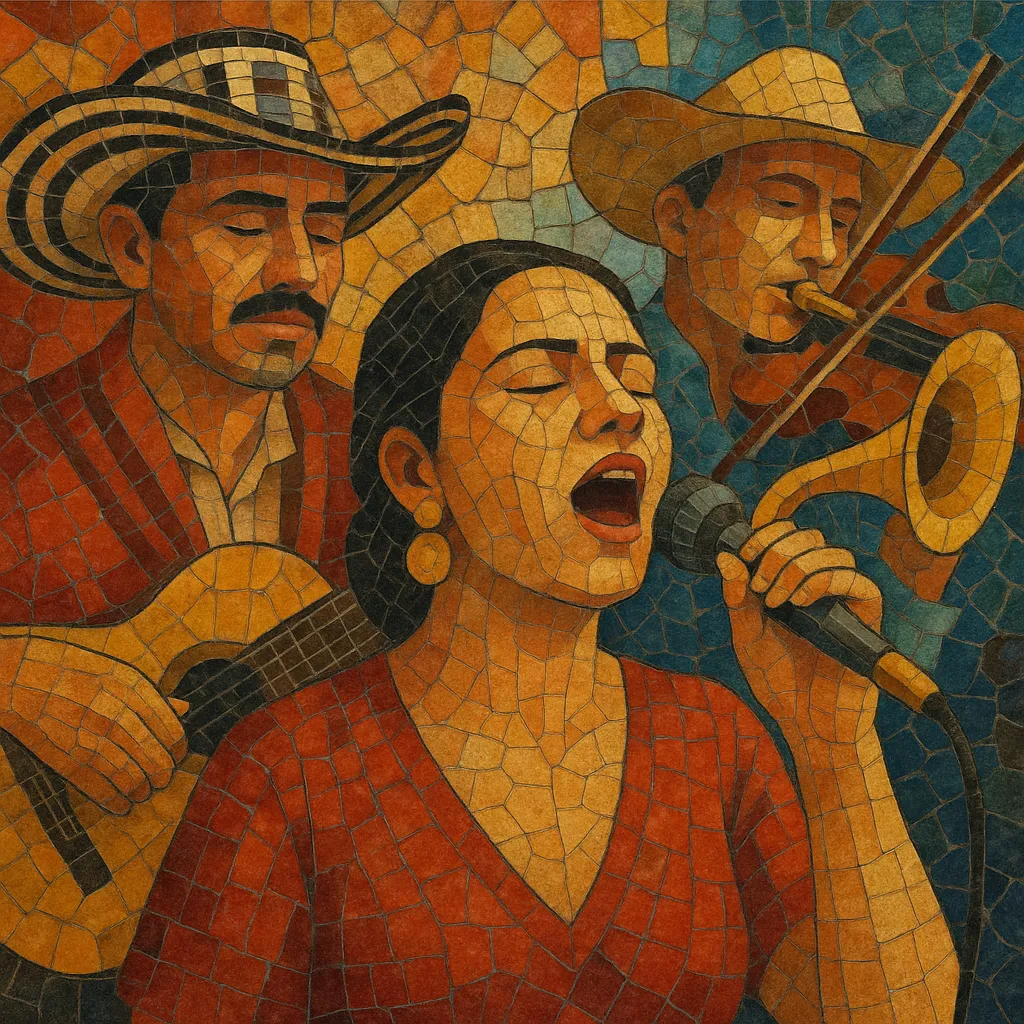Popular colombian music (música popular colombiana) is a contemporary, mainstream evolution of Colombia’s old-school música de carrilera/despecho that blends Mexican ranchera/mariachi and norteño aesthetics with Andean-Colombian songcraft.
It is characterized by emotive, powerhouse vocals; melodramatic storytelling about heartbreak, pride, and resilience; and arrangements that can feature acoustic guitars and requinto, bass, drum kit or programmed percussion, and often mariachi-style trumpets and violins. Many productions keep the waltz-like sway of ranchera (3/4) or the brisk 2/4 polka feel, while newer hits incorporate pop ballad harmony and modern studio polish.
Since the 2010s, the genre has crossed over nationwide, collaborating with pop, vallenato, and urbano acts, yet retaining its core despecho (heartache) identity and cantina roots.
Popular colombian music emerged as a modernization of música de carrilera (also called música guasca or despecho) that had long thrived in rural cantinas of Antioquia and the Andean region. Artists began adopting the sound and emotive delivery of Mexican ranchera/mariachi and norteño while keeping Colombian Andean melodic sensibilities, pasillo-inflected waltz feels, and locally resonant narratives of heartbreak and working-class life. By the 1990s, figures like Darío Gómez helped codify a style that felt both proudly regional and broadly accessible.
During the 2000s, improved production values and wider radio and TV exposure pushed the style beyond local scenes. Arrangements grew fuller—adding mariachi brass, tighter rhythm sections, and pop-ballad harmonic touches—while maintaining the genre’s core identity: dramatic, confessional vocals about love, loss, and dignity. The repertoire balanced 3/4 ranchera-style waltzes and lively 2/4 polkas with slower bolero-like ballads.
In the 2010s, a new wave of singers and songwriters brought the genre to national pop prominence. Hit singles benefited from digital platforms, high-definition video aesthetics, and collaborations with vallenato and urbano artists. While some productions adopted modern drum programming, pads, and contemporary pop mixing, the genre’s storytelling, vocal intensity, and barroom ethos remained central. Today, popular colombian music stands as a mainstream pillar in Colombia, bridging traditional despecho roots with current pop sensibilities and festival-sized audiences.


